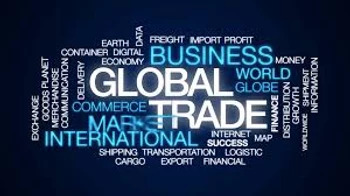
 DTC -Dokumentowy Kredyt Kupiecki
DTC -Dokumentowy Kredyt Kupiecki
Czy „Dokumentowy kredyt kupiecki” …
… przyszła alternatywa dla akredytywy internetowej?
Dokumentowy kredyt kupiecki (DTC) jest substytutem finansowania handlu dla akredytywy dokumentowej banku komercyjnego. DTC jest wystawiana i negocjowana zgodnie z tymi samymi wytycznymi UCP, co akredytywa dokumentowa; poza tym, że fundusze wspierające instrument są dostępne za pośrednictwem międzynarodowej firmy depozytowej będącej stroną trzecią zamiast banku komercyjnego.
View all articles by John Dunlop
Tuesday December 15, 2020
What is a documentary trade credit (DTC)?
A documentary trade credit is a trade finance substitute for a commercial bank documentary letter of credit. A documentary trade credit is issued and negotiated under the same UCP guidelines as a documentary letter of credit; except the funds supporting the instrument are available with a third party international escrow company instead of a commercial bank. A documentary trade credit negotiation uses electronic documents under ICC eRules instead of paper.
The cost to the importer for issuing a documentary trade credit is normally a fraction of the cost of a bank documentary letter of credit. The cost to the exporter is zero because there is no advising, negotiation, or reimbursing bank(s) to charging fees. The documentary trade credit is settled using electronic records via the Internet instead of paper. The DTC follows the same ICC UCP guidelines as a bank. A documentary trade credit is fast, low cost, secure, totally electronic, and without commercial bank involvement. The documentary trade credit is the future of trade settlement between buyers and sellers wanting third party escrow of funds using broadband global Internet, video conferencing and ICC eRules.
How does a documentary trade credit work?
A buyer and seller agree on a trade transaction defined by a purchase order for goods and services between the parties. A documentary trade credit is issued as the payment method supporting the purchase order with terms and conditions of payment. The DTC is issued in the format of a MT700 SWIFT message normally used for a documentary letter of credit. However, the availability of funds for the DTC found in paragraph 41D of the MT700 format is with the international escrow company instead of a commercial bank.
Who can issue a documentary trade credit?
Any company that trades with another company. The DTC is not a financial instrument, it is an instruction. The DTC is managed under UCP guidelines (The International Chamber of Commerce Uniform Customs and Practice for Documentary Credits). The documentary trade credit is already in use as of 2020. It is envisioned that fintech ecommerce platforms will adopt and expand the use of DTCs. Fintech’s have the ability to add video conferencing and eRules to their platforms to enhance their services. At present, banks have declined to incorporate Internet video, electronic records, or eRules into their trade finance operations since they were first published to the banking industry on 1 April 2002 (over 18 years ago).
Can international trade banks issue documentary trade credits?
Yes; except they would be documentary “letters” of credit.
What are the benefits of using a DTC documentary trade credit?
- A DTC follows eUCP 600, International Chamber of Commerce Uniform Customs and Practice for Documentary Credits Supplement for Electronic Presentation (eUCP v2.0) effective 1 July 2019.
- A DTC can be issued and negotiated by Internet ecommerce platforms.
- A DTC uses the universal MT700 format for data fields and nomenclature (Society for Worldwide Interbank Financial Telecommunication).
- A DTC beneficiary’s (seller’s) funds are available with a third party international escrow company under contract with the buyer (applicant) in MT700 paragraph 41D.
- A DTC is completely Internet based using electronic records in PDF format using ICC eRules under UCP 600 version 2.0 (no paper).
- A DTC is payable to the seller within five days or less (UCP 600, Article 14.b).
- A DTC has a low flat rate cost to the importer; not a percentage of the transaction value.
- A DTC has no cost to the beneficiary (exporter).
- A DTC supports Internet ecommerce platforms utilizing video (Zoom), global Internet (Starlink), and eRules (ICC eUCP600 version 2.0).
- A DEC follows the Global Business Model methodology for online trade transactions for quotation, shipment, and payment.
What are the drawbacks of using a DTC documentary trade credit?
- A DTC is not widely known. Buyers and sellers are not aware it is available for use.
- A DTC requires currency to be placed with an international escrow company. Many countries do not allow the movement of currency outside of its borders. Note: some banks issue Letters of credit without cash support and are actually collections and “letters of credit” in name only.
- A DTC requires transparency and due diligence investigation(s) of all principles to the transaction.
Shipments and partial shipments paid fast in days instead of weeks?
Transactions with a large number of containers can be divided into smaller partial shipments requiring smaller cash flow outlays. For example, 100 CTNs with a value of $1,000,000 can be divided into ten weekly shipments of $100,000 each. Since the payment time for electronic records is less than 5 days (UCP 600, Article 14.b), the seller can receive payment for the first shipment before the second shipment is due to be shipped. Indeed, this is probably the most important benefit that the Internet brings to trade transactions using ICC eRules.
Must funds be escrowed with a third party with a DTC?
Yes. The documentary trade credit is defined as funds available with an international escrow company under contract with the buyer for the transaction. The funds cannot be used for any other purpose, and must be returned to the applicant (buyer) if the shipment is not made or is non-compliant and the buyer refuses to accept the documents as is.
The need for a documentary trade credit.
The trade finance reality today. Only ten percent (10.8 %) of world trade is supported by a commercial bank’s promise to honor a presentation of negotiable documents made under UCP 600 documentary letter of credit guidelines (18.0 % LC transactions of world trade x 63.0 % non-discrepant presentations = 10.8%). The 89.2% balance of non LC trade transactions worldwide are a mix of documentary collections and open accounts. Open account transactions are simply collections with usance terms; payable after the goods are delivered to the buyer; thus 90% of trade transactions are paid as collections after shipment and/or delivery. Advance payment (100% deposit), although desirable, is not considered a payment method since there is no exchange of title for money; it is a collection which still must be negotiated after shipment.
In reality, only 10% of trade transactions use an actual credit instead of a collection as the payment method. The worldwide average payment time for a sight letter of credit from the bill of lading date is 24 days. This is a result of couriering paper negotiable documents around the globe with airplanes and trucks. DTC’s use electronic records instead of paper documents and do not require multiple banks or airplanes or trucks.
Summary
The documentary trade credit (DTC) can be used for 10% of world trade not supported with a collection instrument. The disenfranchisement of intermediaries between international buyers and sellers is going to happen. Buyers and sellers will manage their own trade finance credit and collection functions. By the end of 2021 the reality will be global broadband Internet (Starlink/12,000 satellites), global video (Zoom/500 million users), global trade finance internet guidelines (ICC eRules for credits and collections), and global bank or non-bank ecommerce platforms (100s). These technologies will provide global capability for import and export companies to issue, escrow, present, negotiate and transact documentary trade payments (collections) and documentary trade credits (credits) without banks. Trading companies already have ready access to the same International Chamber of Commerce eRules UCP600v2.0 for credits and URC522v1.0 for collections as any bank. These video, eRules and ePlatform technologies were available in 2019, but will permeate the global by the end of 2021 with the advent of universal broadband.
Conclusion
Do I trust the buyer to send the money after I ship the goods and title documents? Or, do I send the title documents after my buyer sends the money. The documentary trade credit instrument uses a third party escrow function under UCP guidelines to protect both the buyer’s money and the seller’s goods. The online documentary trade credit is secure, low cost, and fast. The DTC is designed for the coming acceleration of trade with the expansion of the Internet. Presently, world trade is unaware that this capability is happening; but this will change as it did with penicillin; at first slowly; then rapidly; and then totally.
View all articles by John Dunlop
Tuesday December 15, 2020
About the Author
Mr. John Dunlop is presently Director of Operations for ITFglobal.ie, and is responsible for the online trade transaction management team. The team’s vision is for all companies worldwide to be able to trade goods and services between themselves online via the Internet. He is a trade finance consultant with patents pending for online eUCP trade finance Internet solutions. Previously he was CEO of InterNetLC.com, LLC, providing management of international letters of credit for exporters and importers. He was past Director of International Services for Escrow.com. From that experience, he identified the need for simplified online international trade finance capability. Mr. Dunlop has been providing commercial letter of credit transaction management and documentation services since 1992. He has designed online trade finance capabilities for international banks and proprietary Internet-based software systems. He also teaches as an adjunct instructor for International Transactions at Grossmont College in San Diego, California. His work experience includes aerospace engineering, airline operations, and commercial jet engine marketing and management positions with major airlines and OEM manufacturers. During his four years of active service in the US Army, he served as a Captain commanding a company in Vietnam, and Deputy Director of Engineering at Corpus Christi Army Depot. Mr. Dunlop graduated from the University of Notre Dame in aerospace engineering and is a recipient of an Export Achievement Certificate from the US Department of Commerce and a member of their District Export Council.










